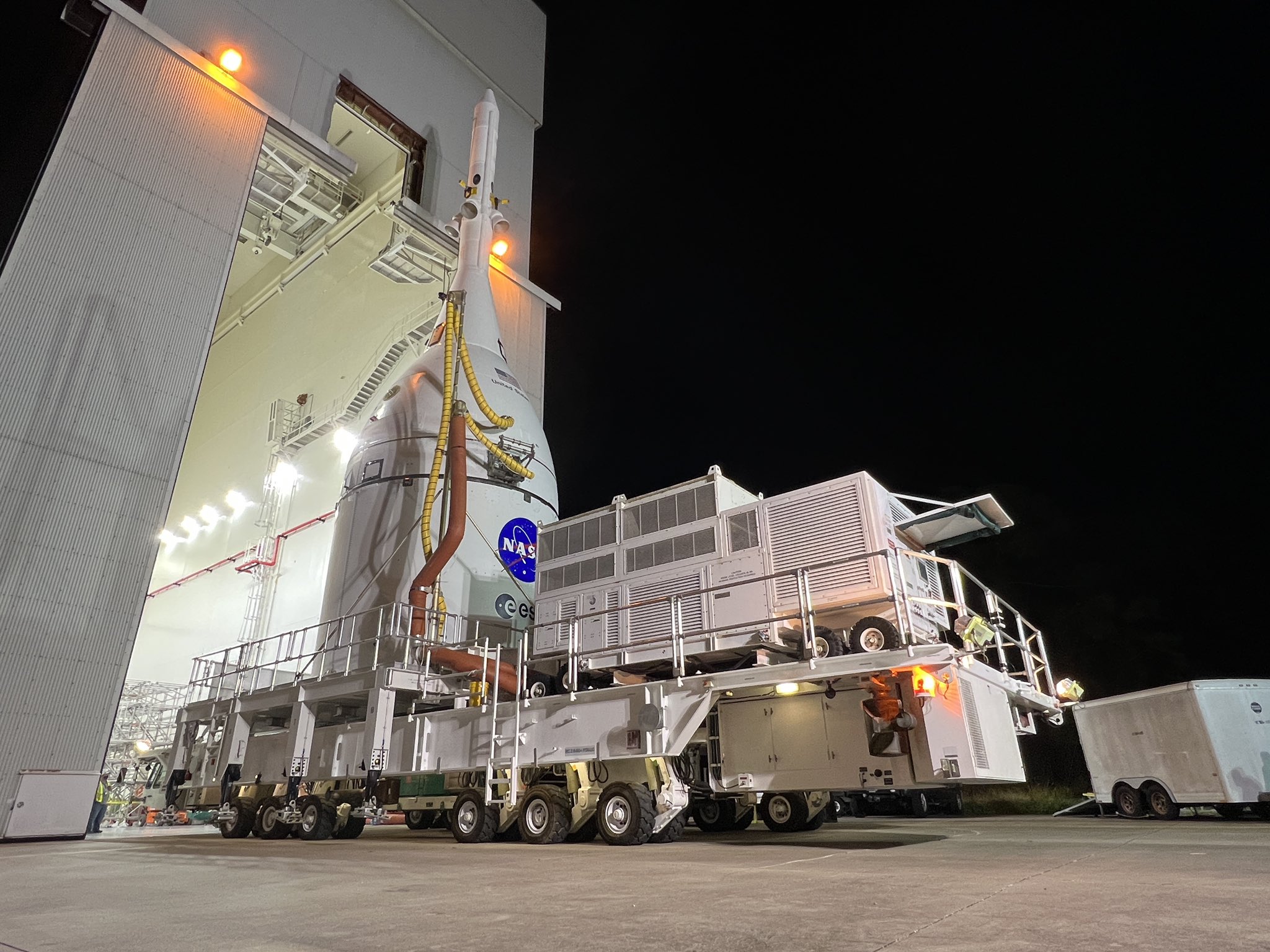
For SpaceUpClose.com & RocketSTEM
CAPE CANAVERAL, FL – NASA’s Orion crew spacecraft was moved this week to the iconic Vehicle Assembly Building (VAB) for stacking on top of the Space Launch System (SLS) mega rocket destined for launching the Artemis 1 mission to the Moon as soon as early 2022 from the Kennedy Space Center (KSC) in Florida.
Orion’s move started Monday evening, Oct. 18 exiting the Launch Abort System Facility (LASF) around 6 p.m. EDT standing upright and gloriously exposed atop a mobile transporter – sporting the energetic logo ‘We Are Going’ – and was completed overnight Tuesday early morning, Oct. 19 with arrival at the VAB around 5 a.m. EDT.
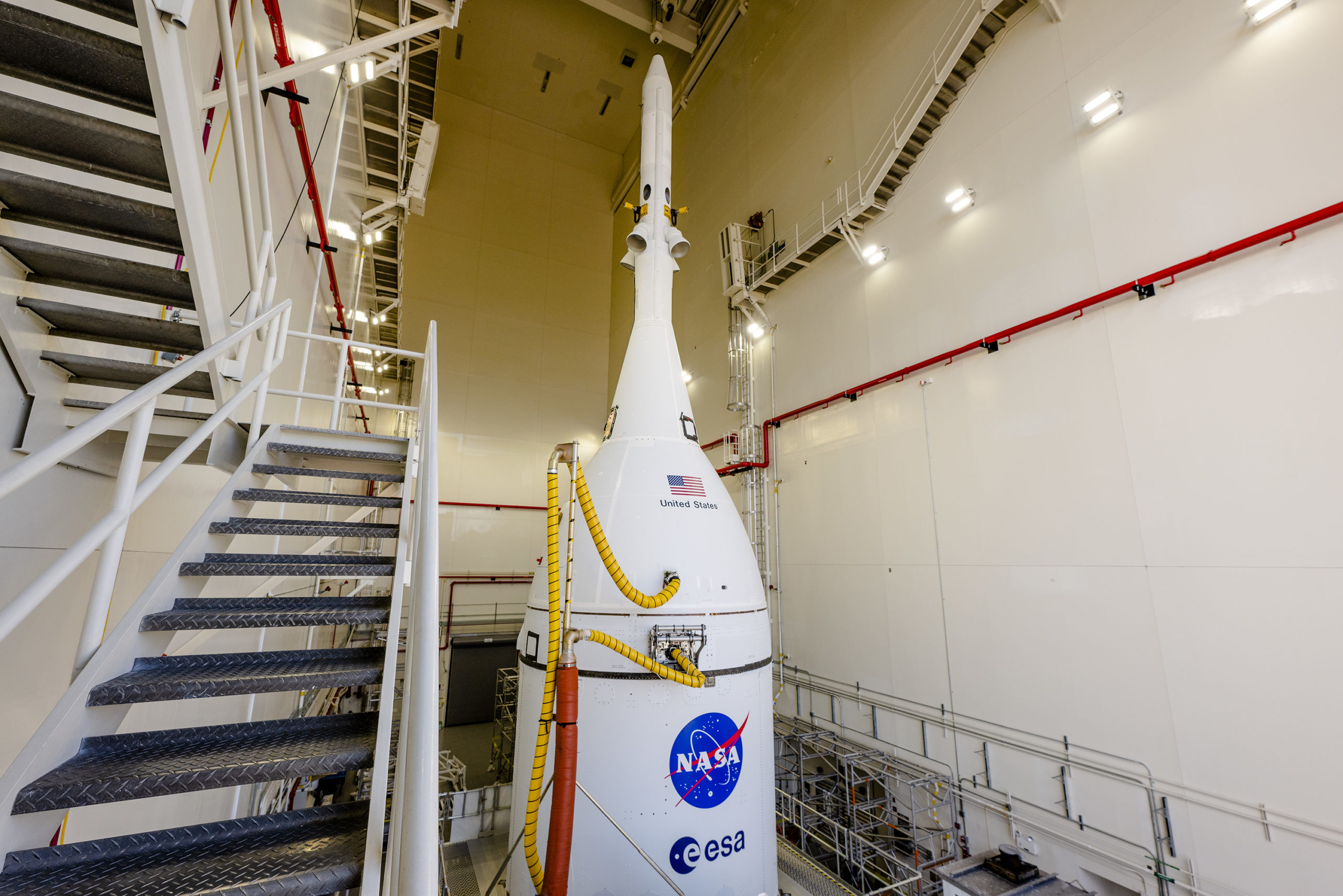
Since the Orion spacecraft is comprised of the Crew Module built by Lockheed Martin for NASA and the Service Module built by ESA (European Space Agency) it displays the logos of both space agency’s
We're ready to move! Tonight @NASA_Orion will be transferred to the Vehicle Assembly Building at @NASA_Kennedy for stacking on the @NASA_SLS. Building Orion is an international effort and our fairings proudly carry the signage for both @NASA and @ESA. Go #Artemis! pic.twitter.com/G1tOLp7r51
— Catherine Koerner (@Cathy_Koerner) October 18, 2021
“Caution: Spacecraft Approaching. @NASA_Orion is on the move! The spacecraft is currently being transported from the Launch Abort System Facility to the iconic Vehicle Assembly Building where it’ll be mated with the @NASA_SLS rocket,” NASA KSC tweeted.
🚨 Caution: Spacecraft Approaching 🚨@NASA_Orion is on the move! The spacecraft is currently being transported from the Launch Abort System Facility to the iconic Vehicle Assembly Building where it’ll be mated with the @NASA_SLS rocket. Watch live: https://t.co/HatxYIpyHm pic.twitter.com/6EM4lOlb0Q
— NASA's Kennedy Space Center (@NASAKennedy) October 19, 2021
Completion of stacking of Orion on SLS is scheduled for later this week in the VAB. See upcoming story
Liftoff of the uncrewed Artemis 1 mission is slated for early 2022 from Launch Complex 39B at NASA KSC on the first in a series of increasingly complex missions to test the SLS heavy lift mega rocket and Orion crew capsule as an integrated system prior to crewed flights to the Moon starting with Artemis 2.
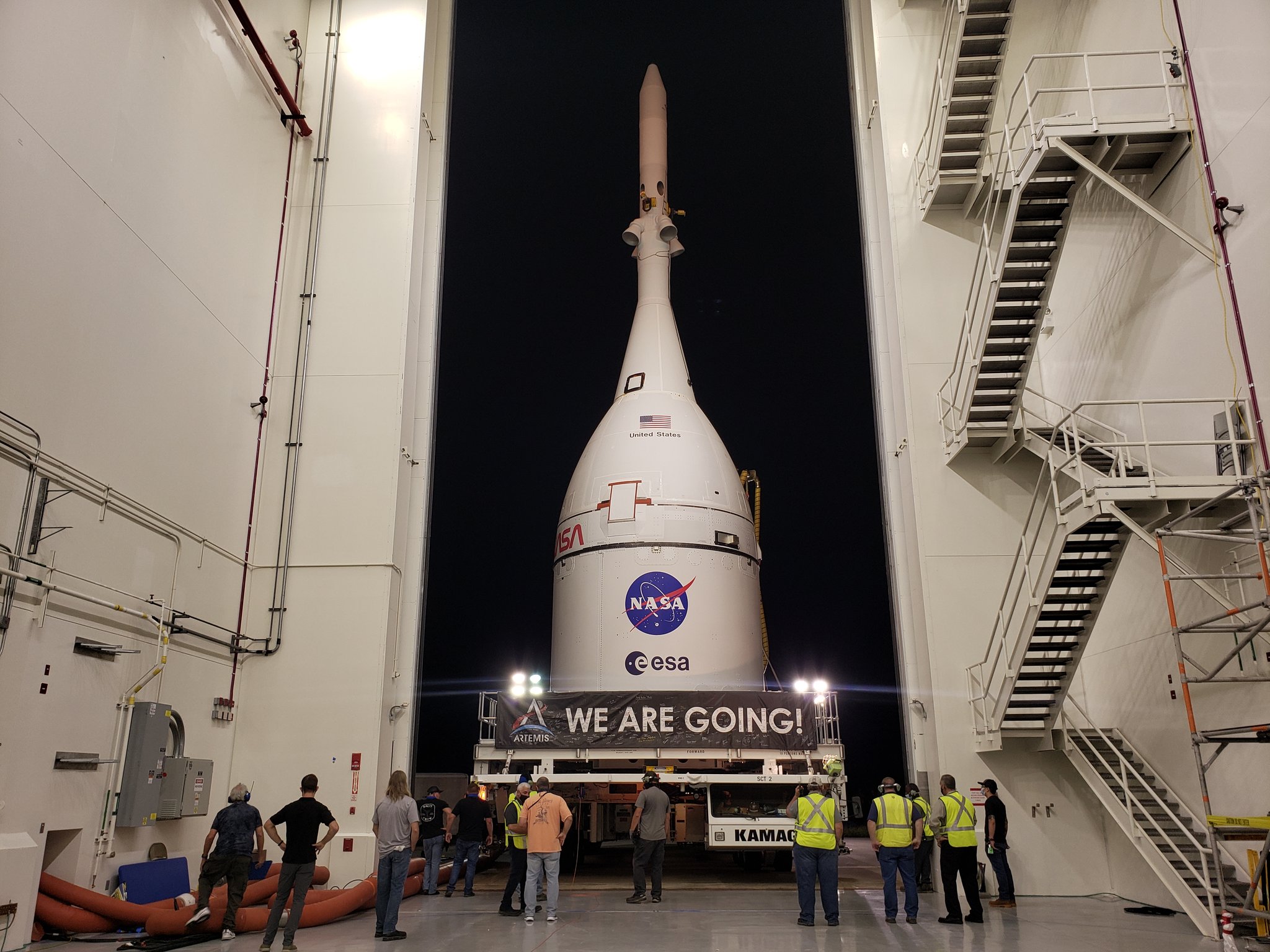
SLS is the most powerful rocket the world has ever seen generating some 8.8 million pounds of liftoff thrust at ignition – about 15% more powerful than NASA’s legendary Saturn V that hurled the first humans to land on the Moon back in 1969 on the Apollo 11 moon landing mission.
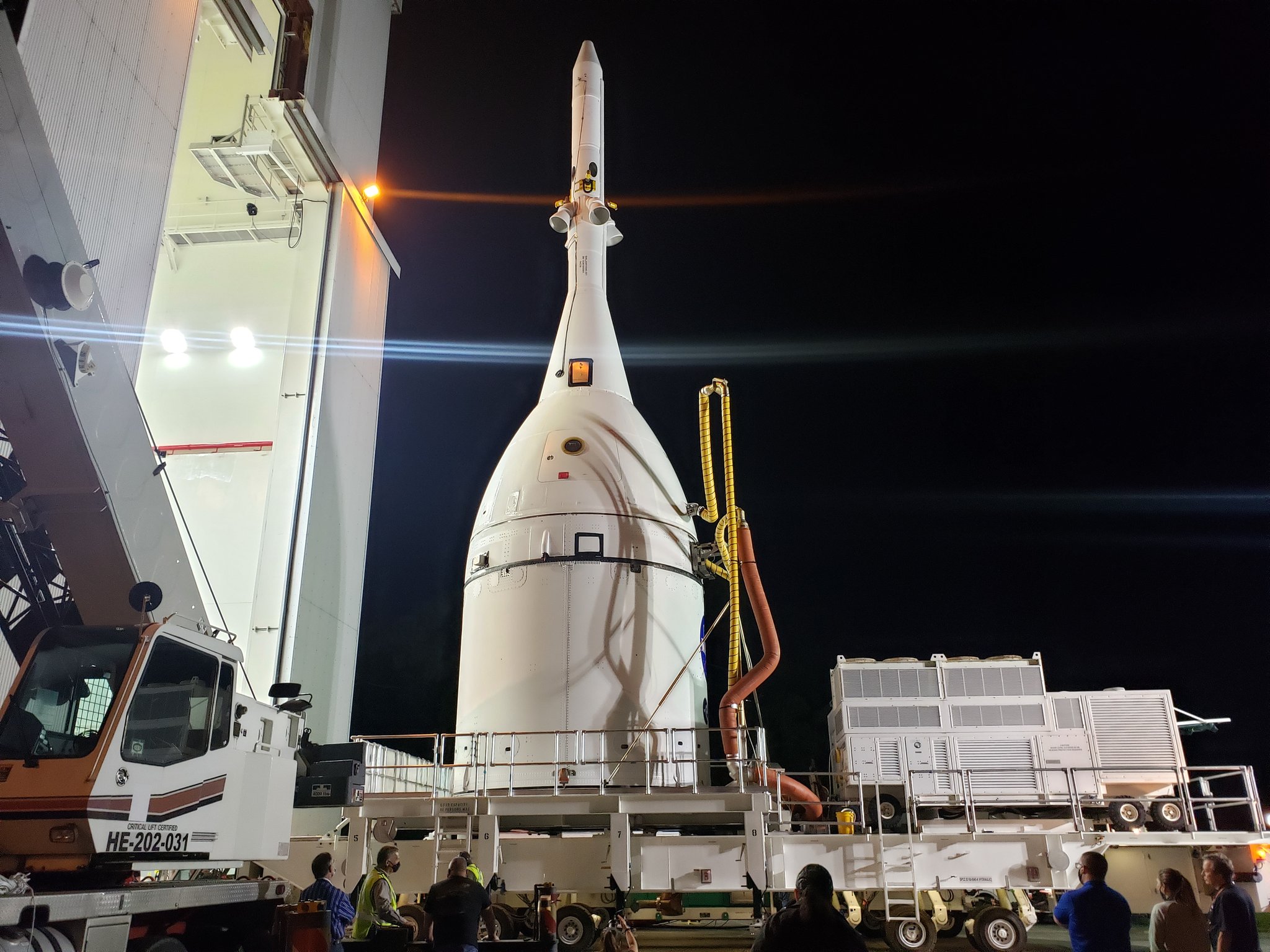
Watch this cool NASA KSC video of Orion on the move from the LASF to the VAB early this week on Oct. 18/19, 2021
We’re really movin’!! pic.twitter.com/VhIPLFLZ2j
— NASA's Exploration Ground Systems (@NASAGroundSys) October 19, 2021
Orion arrived at the entrance to the VAB transfer aisle shortly before 5 a.m. Tuesday, Oct. 19, after traveling approximately 6 miles (10 kilometers) from the LASF.
“The Orion spacecraft has arrived at the Vehicle Assembly Building! It’ll soon be integrated with @NASA_SLS, completing assembly of the rocket for the #Artemis I mission,” NASA KSC tweeted.
🤩 @NASA_Orion has entered the chat.
The Orion spacecraft has arrived at the Vehicle Assembly Building! It'll soon be integrated with @NASA_SLS, completing assembly of the rocket for the #Artemis I mission: https://t.co/rMfALtTKWD pic.twitter.com/G0TCC7zPPh
— NASA's Kennedy Space Center (@NASAKennedy) October 19, 2021
The Orion move only took place after all SLS components required to receive it were stacked in VAB High Bay 3 and after completion of the ‘modal’ resonance testing campaign.
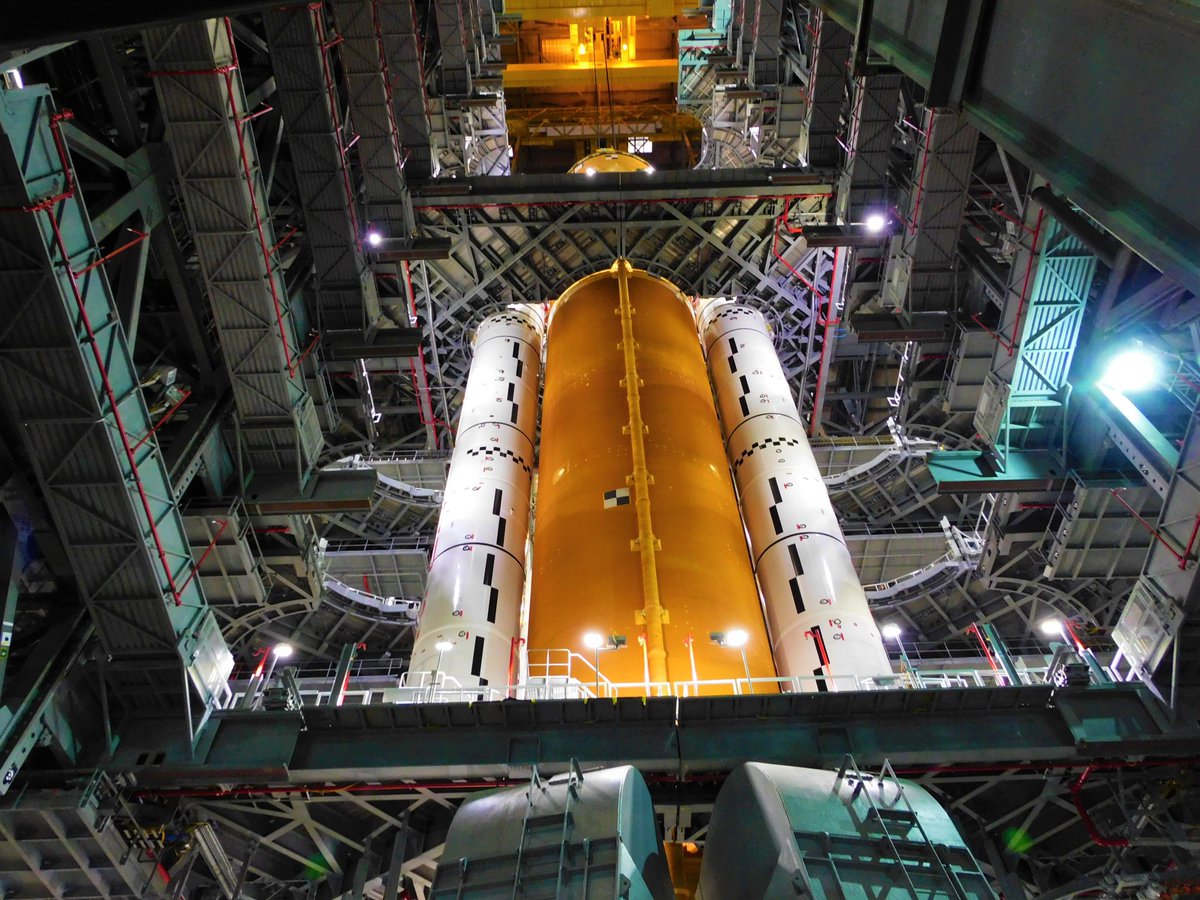
“On future missions, Orion will carry astronauts to space, provide emergency abort capability, sustain the crew during space travel, and provide safe entry from deep space return velocities on Artemis missions,” NASA officials say.
“NASA is working with a diverse group of industry and international partners to make this next-generation spacecraft a reality.”
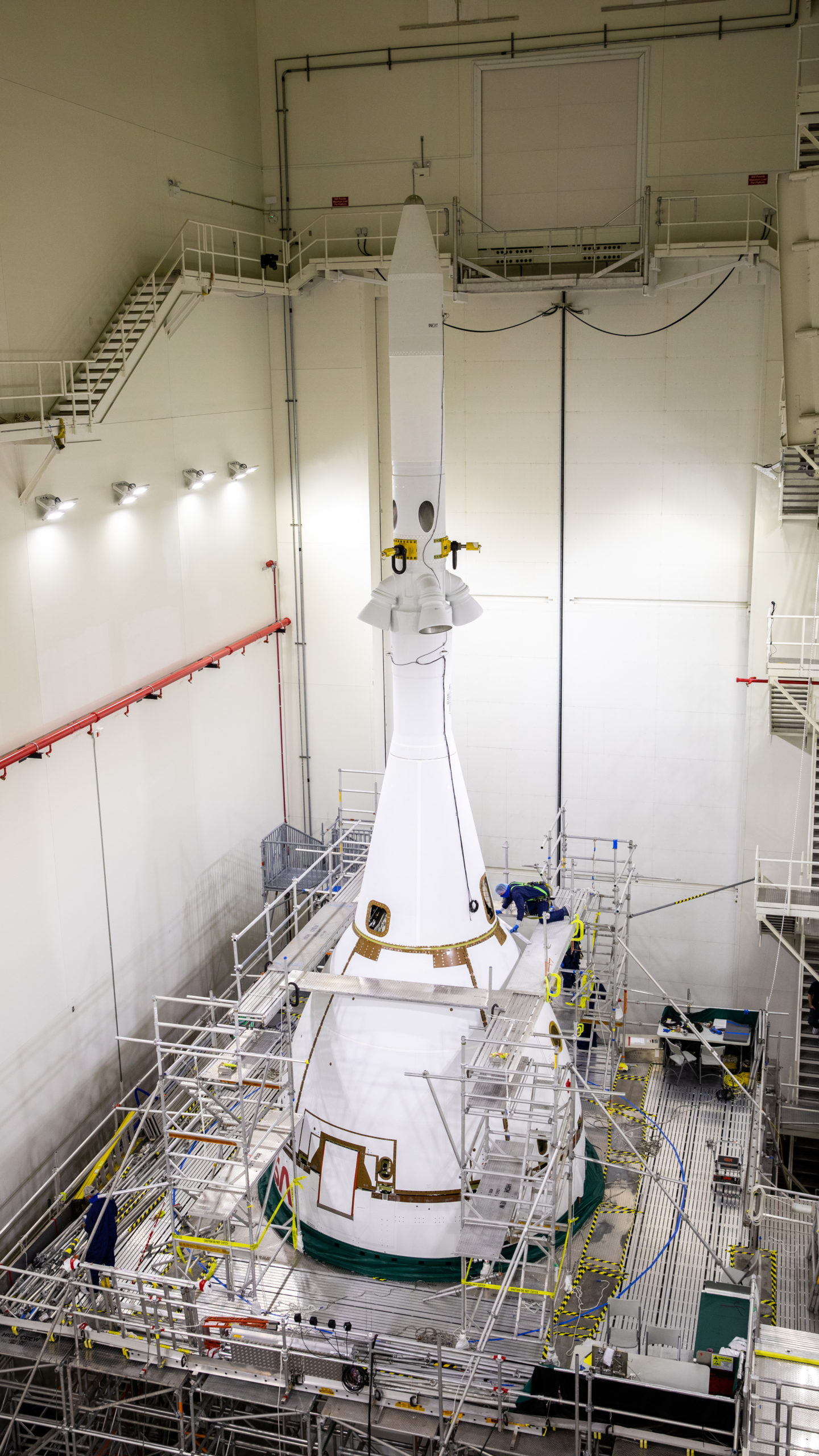
Approximately 1,900 suppliers across the U.S. and Europe provide components for Orion.
Lockheed Martin is the spacecraft’s prime contractor, and ESA (European Space Agency) oversees the development of Orion’s service module.
The Artemis 1 Orion crew capsule was manufactured inside NASA’s Neil Armstrong Operations and Checkout Building (O & C) at KSC.
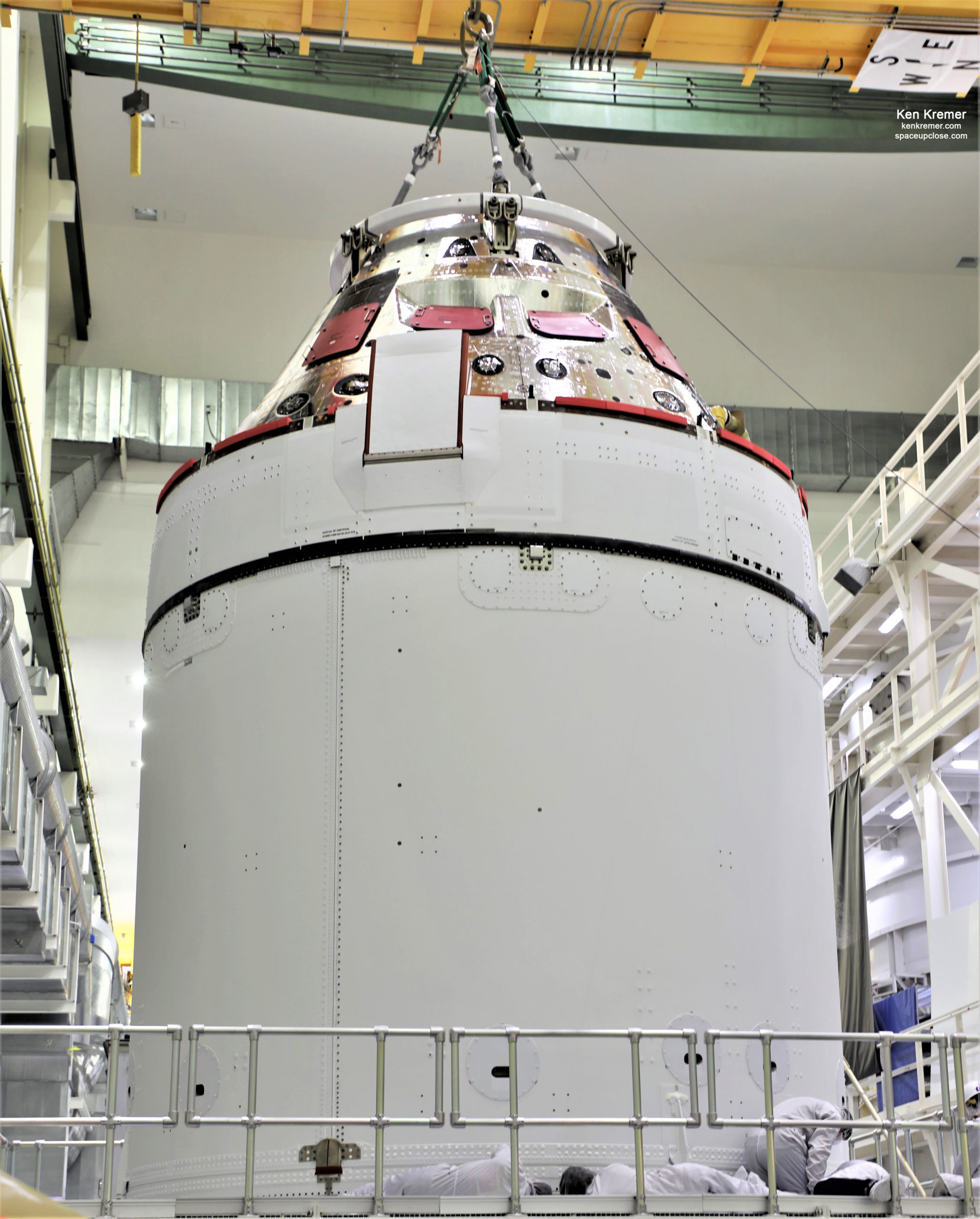
Media including Ken Kremer and Jean Wright for Space UpClose were invited for an up close visit to see and photograph Orion after assembly of the NASA Crew Module & ESA Service Module was completed inside the O & C earlier this year in January 2021.
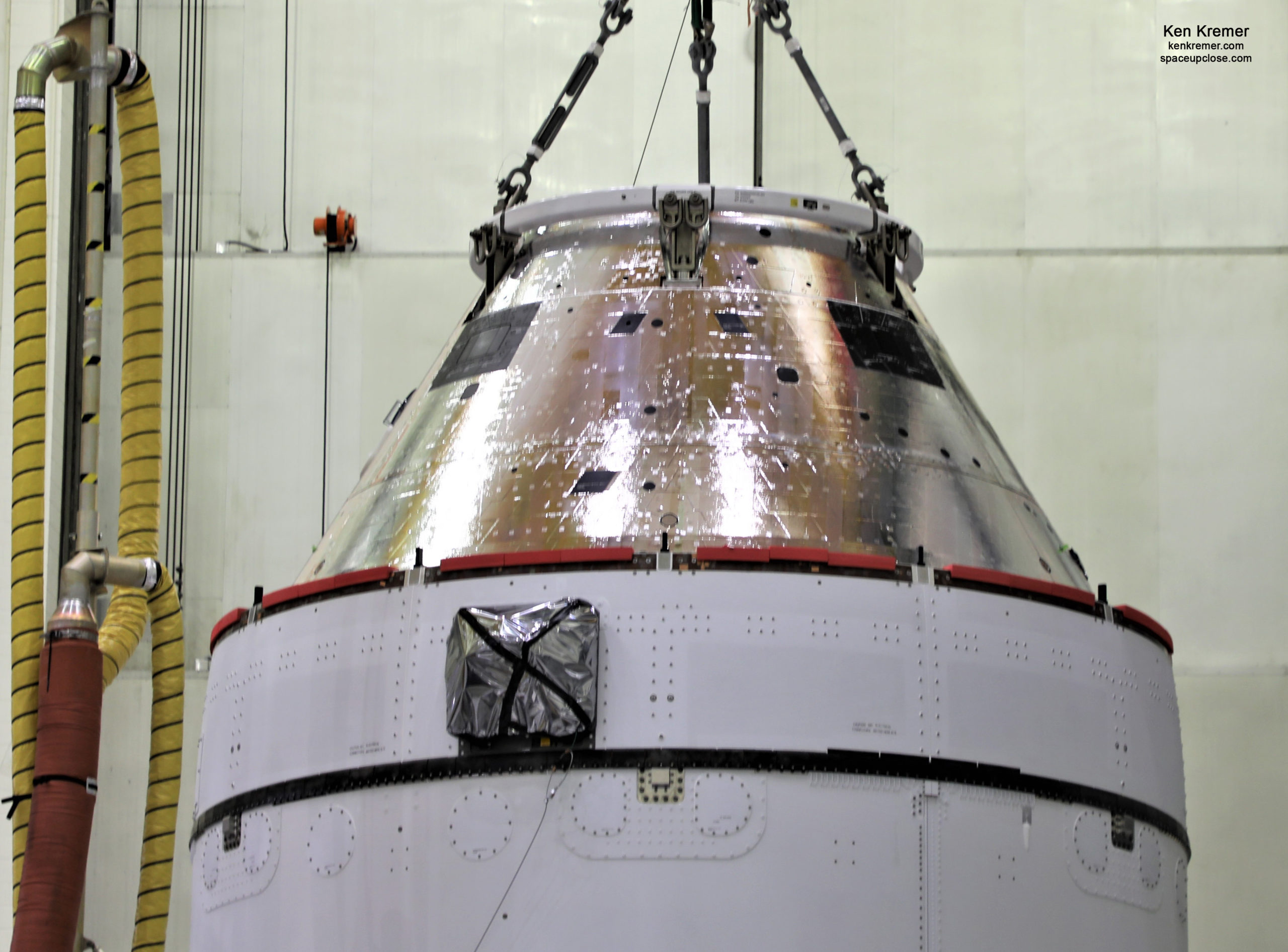
Next it was moved to the Launch Abort System Facility (LASF) where teams at KSC installed Orion’s launch abort system (LAS) and then methodically installed all four ogive fairing.
The fourth and final ogive fairing was attached to Orion on Sept. 7, 2021.
The ogives are protective panels that will shield the Orion crew module from the severe vibrations and sounds it will experience during launch.
SLS serves as the backbone of the Artemis program and the nation’s future deep space exploration missions.
The SLS core stage measures 212 feet tall and 27.6 feet in diameter.
Overall SLS stands 322 feet (98 meters) tall and weighs 5.75 million pounds
It is equipped with four Aerojet-Rocketdyne built RS-25 engines fueled by over 730,000 gallons of cryogenic super cold LOX (liquid oxygen) and LH2 (liquid hydrogen) propellants to generate some 2 million pounds of liftoff thrust to help power the SLS rocket at launch.
SLS was built by prime contractor Boeing at NASA’s Michoud Assembly Facility in New Orleans.
The RS-25 engines are attached to the base of the core stage and are recycled from the Space Shuttle where they were reused and reflown numerous times.

Previously known as the Space Shuttle Main Engine, or SSME, they have been refurbished and upgraded in numerous ways including with a new ‘brain controller’ and can fire at 109% thrust.
This first SLS core stage arrived on NASA’s Pegasus barge April 27 and was then rolled off the barge and into VAB two days later on April 29 for the extensive stacking and preparatory operations for launch on the history making Artemis 1 mission to deliver NASA’s Orion deep space human rated capsule to the Moon.

The overall stacking process began on June 11 when technicians with NASA’s Exploration Ground Systems team lifted the 21 story core stage by first hoisting it horizontal off the transporter inside the VAB transfer aisle and then rotated it vertical.

This NASA graphic illustrates the stacking process.
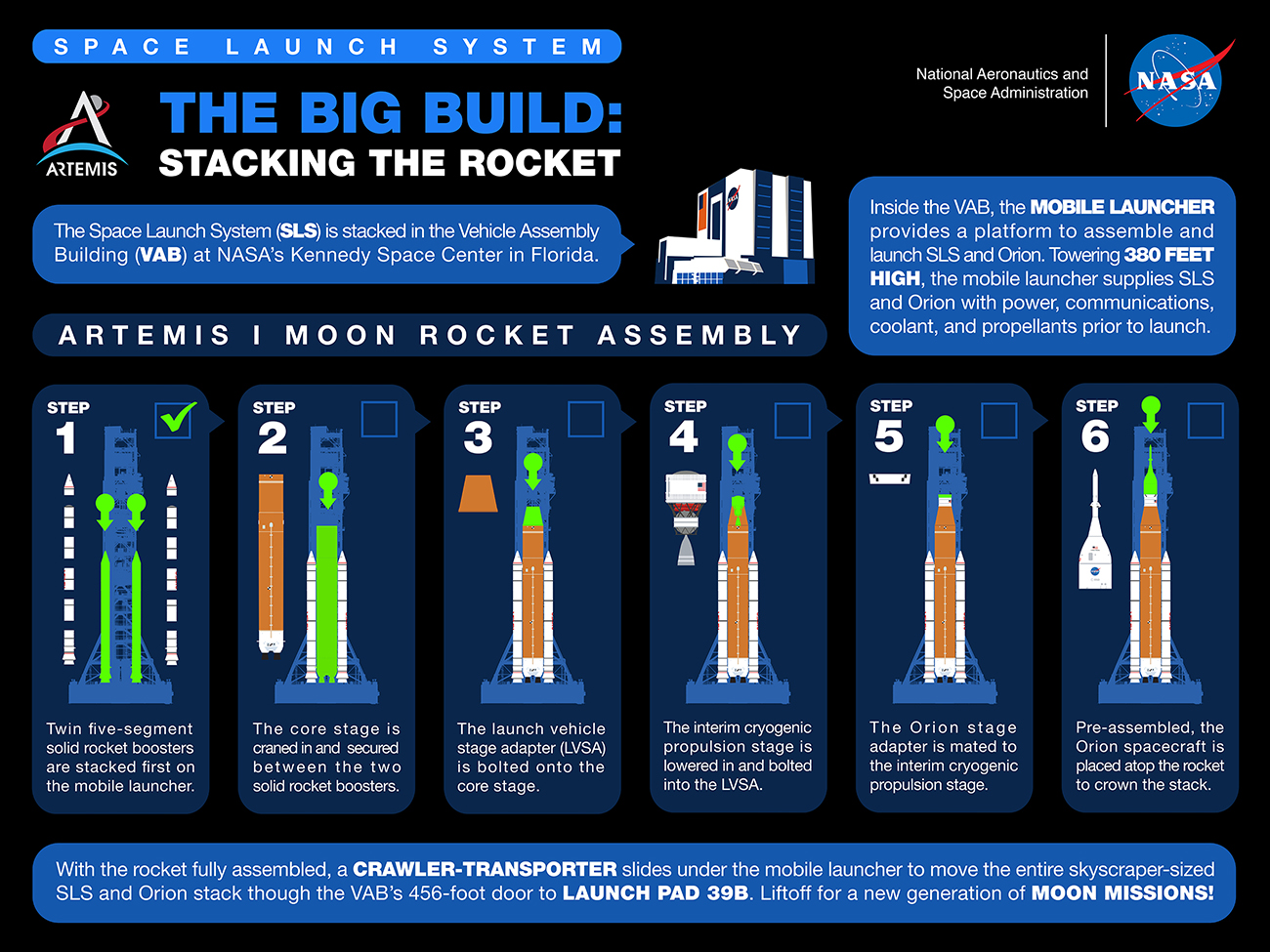
Watch Ken’s continuing reports about Artemis, SLS, Orion and NASA missions, Lucy Asteroid mission, Blue Origin and Space Tourism, SpaceX Cargo and Crew Dragons, SpaceX Starlink, Commercial Crew and Starliner and Crew Dragon and onsite for live reporting of upcoming and recent SpaceX and ULA launches including Crew 1 & 2 & 3, ISS, Solar Orbiter, Mars 2020 Perseverance and Curiosity rovers, NRO spysats and national security missions and more at the Kennedy Space Center and Cape Canaveral Space Force Station.
Stay tuned here for Ken’s continuing Earth and Planetary science and human spaceflight news: www.kenkremer.com –www.spaceupclose.com – twitter @ken_kremer – email: ken at kenkremer.com
Dr. Kremer is a research scientist and journalist based in the KSC area, active in outreach and interviewed regularly on TV and radio about space topics.
………….
Ken’s photos are for sale and he is available for lectures and outreach events
Please consider supporting Ken’s work by purchasing his photos and/or donating at Patreon:
https://www.patreon.com/kenkremer

x



